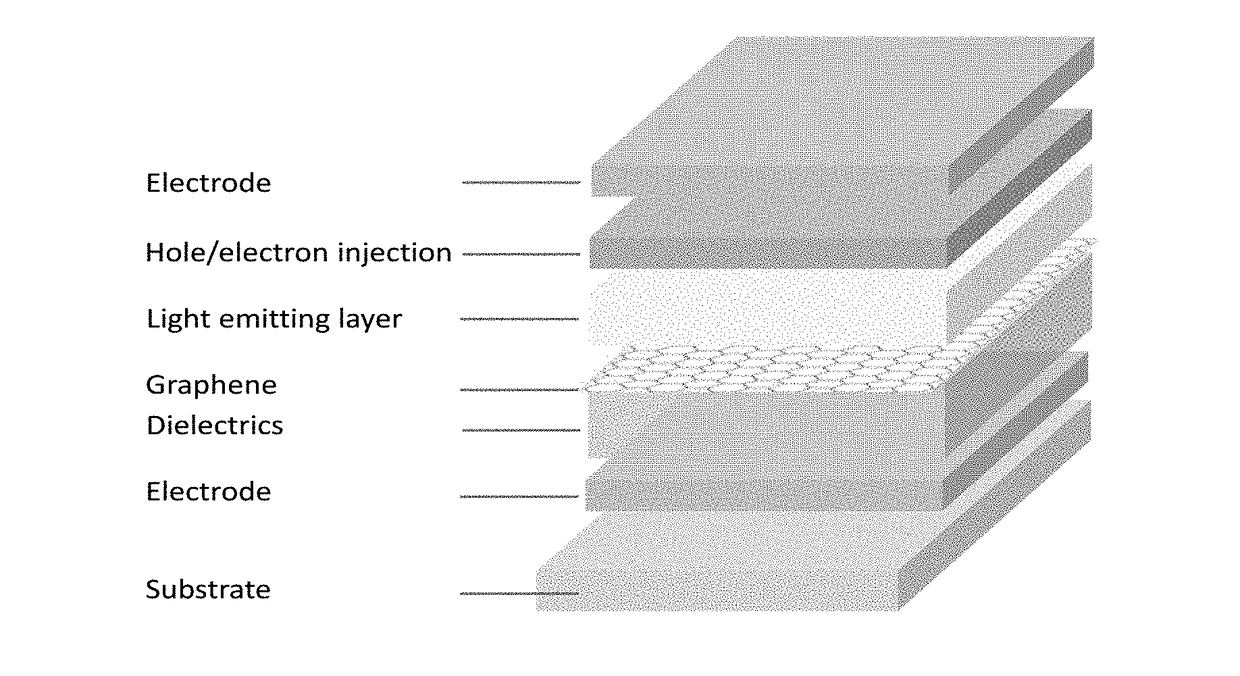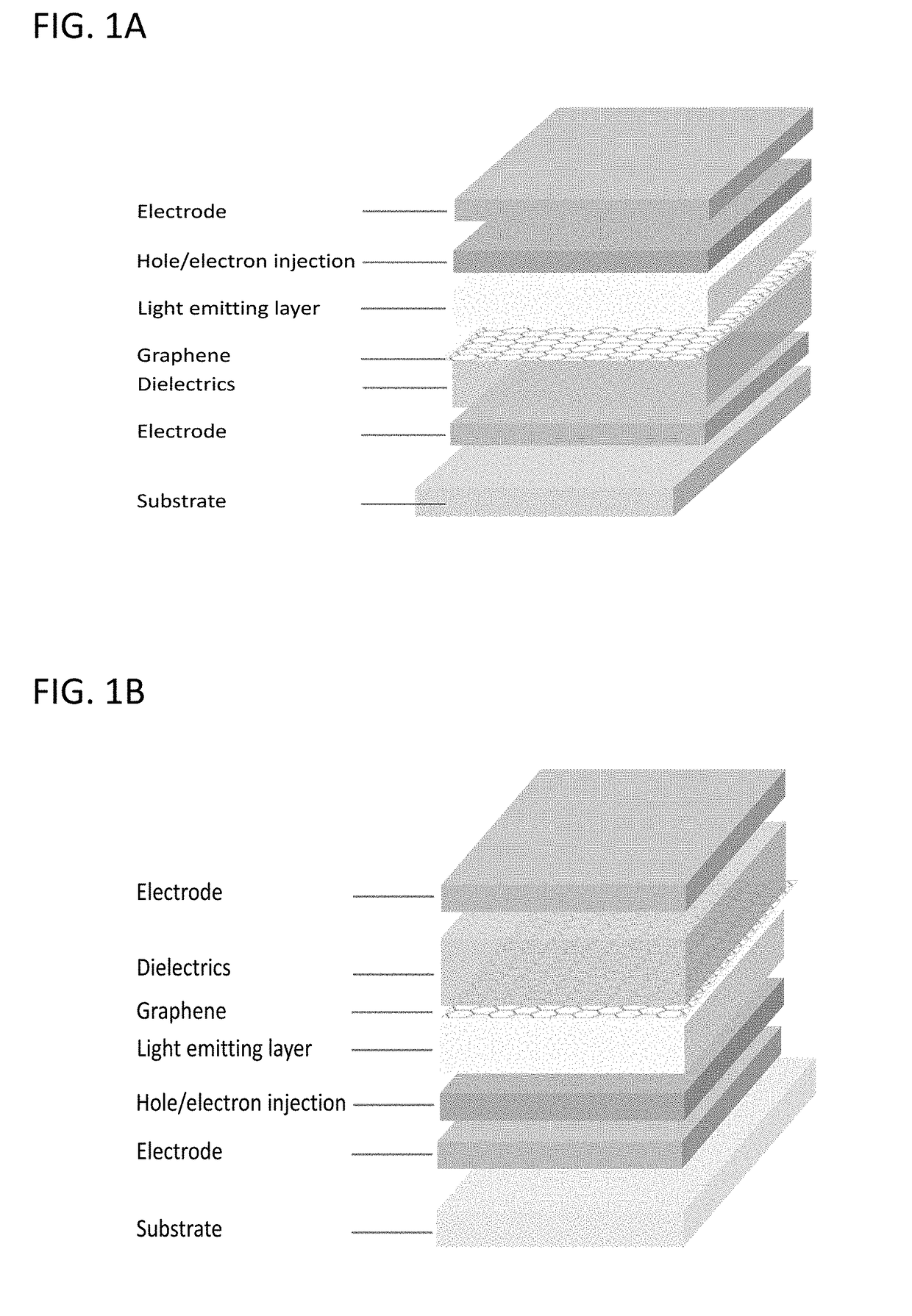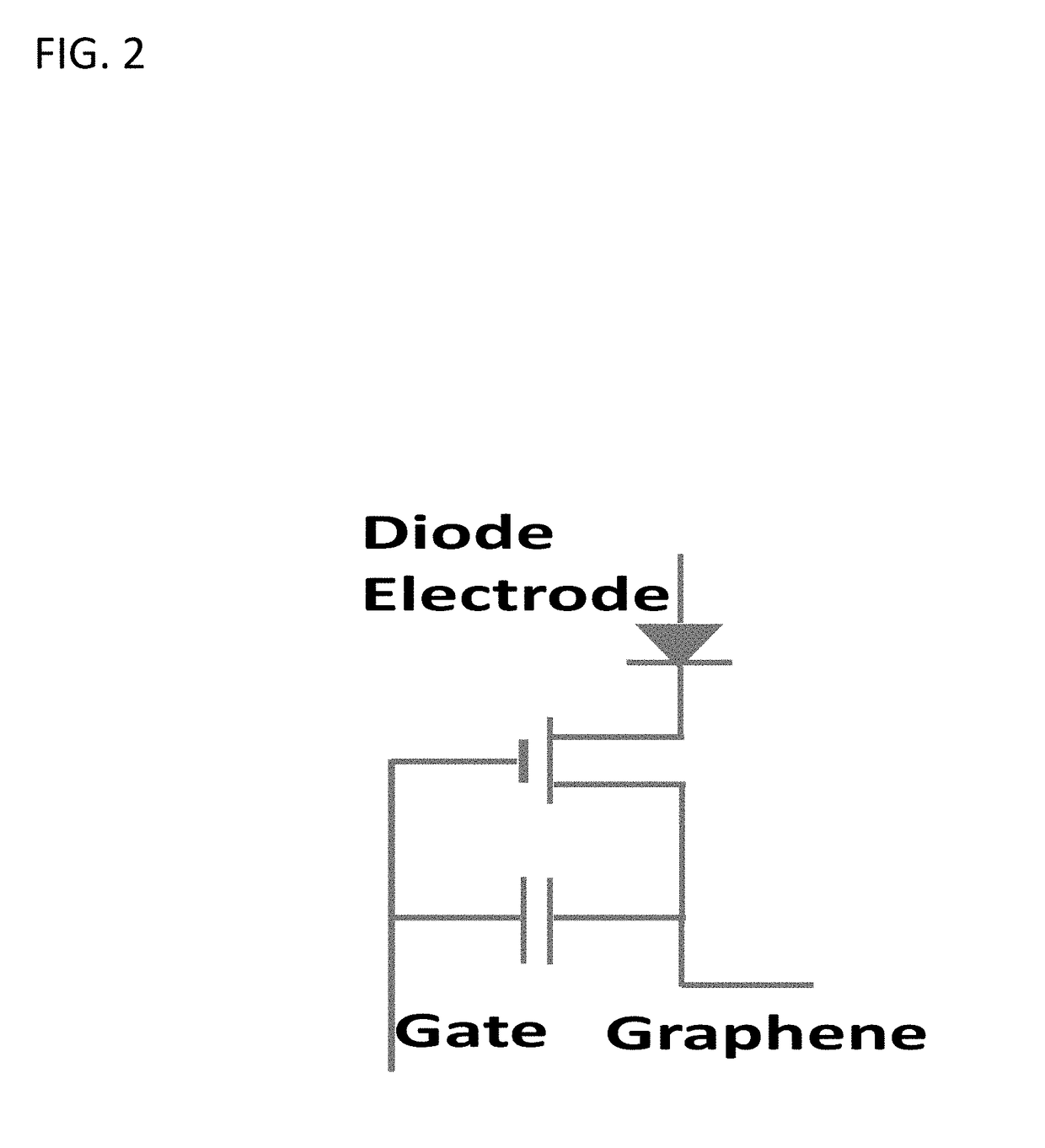Carbon Enabled Vertical Organic Light Emitting Transistors
a technology of organic light and transistor, which is applied in the direction of solid-state devices, chemistry apparatus and processes, and light-emitting compositions. it can solve the problems of poor stability, unsuitability for oled pixels, and the inability to realize the advances promised by oleds
- Summary
- Abstract
- Description
- Claims
- Application Information
AI Technical Summary
Benefits of technology
Problems solved by technology
Method used
Image
Examples
example 1
on of Graphene Enabled OLED
[0111]In one exemplary embodiment, shown schematically in FIGS. 1A and 1B, on substrates like glass, plastics, and silicon wafers, a layer of metal electrode (Al, Mo, Cr, Cu, Ag, Pt, Pd and Au) may be fabricated, as described, following by the fabrication of dielectrics (Al2O3, SiO2, HfO2, SiNx, ZrO2, BaSrO3, BaTiO3, polymer, polymer electrolytes, electrolytes, ionic liquids, and ionic gels), again as previously discussed. Then a layer of graphene may be placed on dielectrics by transfer, printing, or directly growth, as described in greater detail above. On the top of graphene, light-emitting materials (RGB small molecules or conjugated polymers) are fabricated by evaporating or spin-coating, as discussed above. Atop of light-emitting materials, hole / electron injection layer may then be deposited by evaporating or spin-coating, as discussed. The final metal electrode may then deposited to complete the device as previously discussed. Utilizing such combina...
example 2
ng Heterojunction VOLET and OLEDs
[0112]In another exemplary embodiments, shown schematically in FIGS. 4A and 4B, under bottom-gated OLED with all graphene electrodes (FIG. 3A), a graphene enabled vertical heterojunction transistor is added (FIG. 4A). The graphene enabled vertical heterojunction transistor may be built with a graphene electrode, dielectrics layer, a graphene electrode and semiconductor stacked in sequence from bottom to top, where the OLED is bottom-controlled by two transistors and one capacitor (2T1C) circuitry. Similarly, on top-gated OLED with all graphene electrodes (FIG. 3B), a graphene enabled vertical heterojunction transistor is added (FIG. 4B), where the graphene enabled vertical heterojunction transistor was built with a graphene electrode, dielectrics layer, a graphene electrode and semiconductor stacked in sequence from top to bottom. Here, OLED is top-controlled by 2T1C circuitry.
example 3
plays
[0113]Finally, although the above exemplary embodiments and discussion has focused on methods, architectures and structures for individual devices, it will be understood that the same architectures and structures may be combined as pixels into a VOLET display device. In such an embodiment, a plurality of VOLETs as described herein may be combined and interconnected as is well-known by those skilled in the art, such as by electronically coupling the VOLETs into addressing electrode lines, to form a TFT-backplane for a display, such as an AMOLED display.
PUM
 Login to View More
Login to View More Abstract
Description
Claims
Application Information
 Login to View More
Login to View More - R&D
- Intellectual Property
- Life Sciences
- Materials
- Tech Scout
- Unparalleled Data Quality
- Higher Quality Content
- 60% Fewer Hallucinations
Browse by: Latest US Patents, China's latest patents, Technical Efficacy Thesaurus, Application Domain, Technology Topic, Popular Technical Reports.
© 2025 PatSnap. All rights reserved.Legal|Privacy policy|Modern Slavery Act Transparency Statement|Sitemap|About US| Contact US: help@patsnap.com



